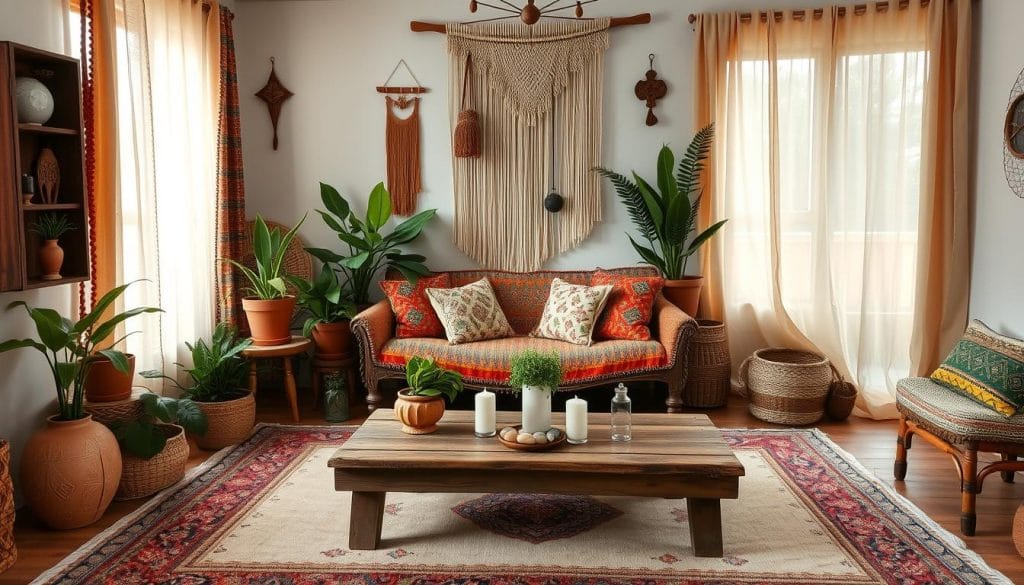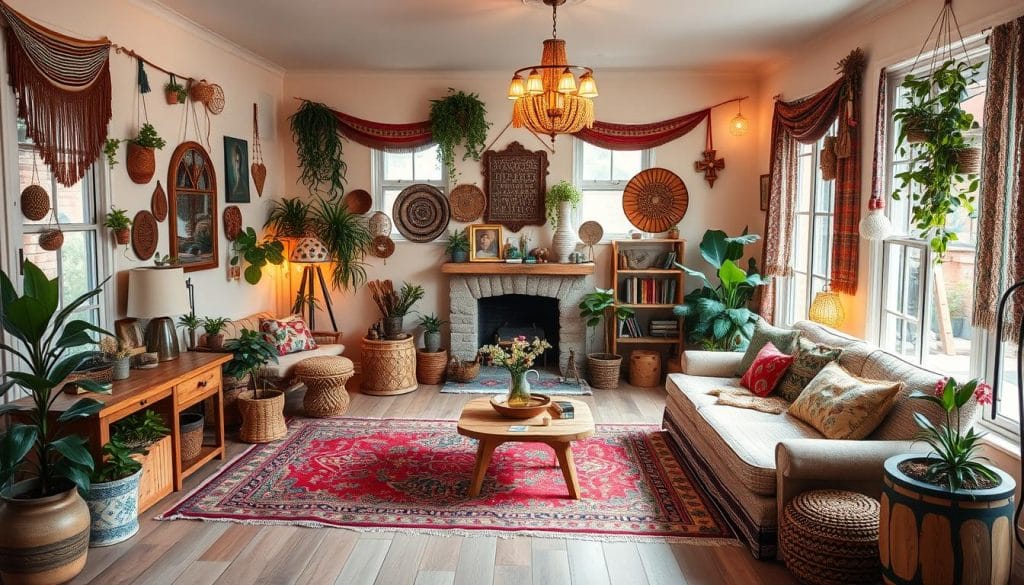Have you ever stood in your living room and felt that same spark of joy when you find the perfect outfit? What if I told you your home could reflect your values as thoughtfully as your wardrobe? Let’s talk about how the clothes we love and the spaces we live in share more than just color palettes – they’re both powerful ways to care for our planet.
Right now, the fashion world uses enough fabric each year to wrap the Earth 1,300 times. Only 20% gets reused. But here’s the good news: the creativity we apply to our closets can transform our homes. We’ve helped countless homeowners discover that eco-conscious choices don’t mean sacrificing beauty – they create it.
In this guide, we’ll show you how to:
- Repurpose materials like a fashion designer reimagines fabric scraps
- Choose durable, timeless pieces over fast-furniture trends
- Mix textures and patterns sustainably (yes, it’s easier than matching socks!)
Remember that linen shirt you’ve loved for years? Your sofa can have that same lasting charm. Together, we’ll craft spaces that feel uniquely yours while respecting Earth’s resources. Ready to make every room in your house tell a story you’re proud to share?
Understanding the Eco-Friendly Fashion Landscape
When we think about fashion, it’s not just about what we wear—it’s about the story behind every stitch and seam. True sustainability weaves together ethical practices, environmental care, and lasting value. Whether choosing a dress or a rug, each decision carries weight beyond aesthetics.
What Does Responsible Design Look Like?
Imagine your favorite sweater: its quality comes from both the materials and the hands that made it. The fashion industry’s footprint includes fair wages, safe workplaces, and carbon cuts. Similarly, your couch’s fabric and frame should reflect care for people and ecosystems.
https://www.youtube.com/watch?v=87UzOBOfGKo
In 2020, big brands tried self-regulated reforms. Most failed. That’s why our homes need transparent choices—like favoring local artisans over mass-produced decor. It’s not just “green” materials; it’s circular thinking that values durability and justice.
Why Can’t We Wait?
The fashion industry generates 10% of global carbon emissions—and home goods follow similar patterns. Every minute, 11,000 items of clothing hit landfills. This urgency isn’t just about trends—it’s about survival. Your choices matter now more than ever.
Here’s how to spot genuine efforts: Check for certifications like Fair Trade labels or B Corp status. Ask: Who made this? How long will it last? Does the company report actual progress? That’s how we avoid greenwashing—in closets and living rooms.
Exploring Sustainable Style for Home Design
What if your sofa could age like your favorite jeans? The ones that soften with time but never lose their shape? That’s the magic of slow fashion principles in home design. Kate Fletcher’s approach—born from the “slow food” movement—teaches us to value craftsmanship over mass production. Your space deserves that same thoughtful attention.
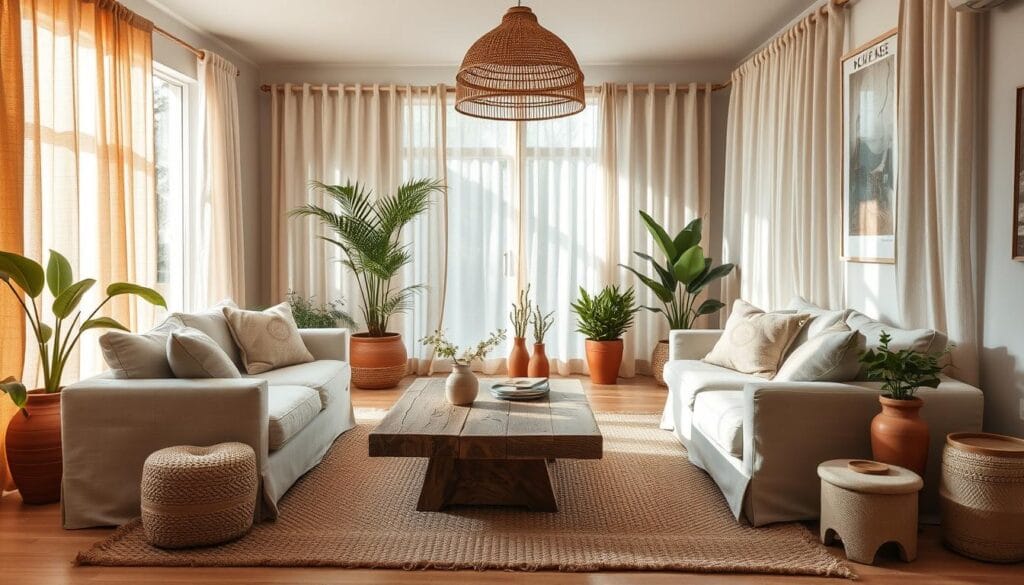
Think of your living room as a capsule wardrobe. Instead of cluttering it with disposable trends, choose timeless pieces that adapt with you. A handwoven rug becomes your linen jacket equivalent—it works in any season, under any light. Artisans’ touch turns functional items into heirlooms, like that quilt your grandma stitched.
We’ve found that homes thrive on fewer, better choices. A pottery bowl holds stories as well as fruit. A wooden chair carved by local makers outlasts plastic replicas. This isn’t minimalism—it’s meaningful curation.
Here’s how to start:
- Rotate textiles seasonally (swap heavy throws for breezy linens)
- Choose natural fibers over synthetic blends (cotton canvas sofas age gracefully)
- Support small-batch creators—their embroidery adds soul to spaces
Your home won’t just look better. It’ll feel better, knowing each choice honors Earth and hands that crafted it. Ready to design a home that loves the world as much as you do?
Essential Tools and Materials for an Eco-Friendly Home Wardrobe
What if your throw pillows could tell a story as rich as your favorite sweater? Just like building a conscious closet, curating home textiles begins with materials that breathe life into spaces while respecting nature. Let’s explore the building blocks for interiors that age gracefully and leave gentle footprints.
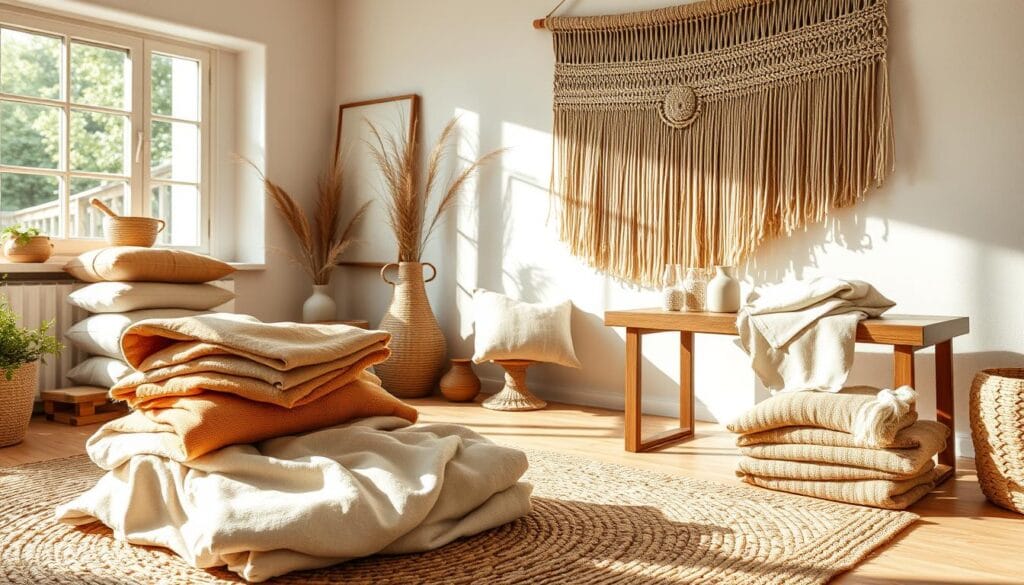
Selecting Natural and Biodegradable Fabrics
Your sofa deserves fabrics that work as hard as your trusty denim jacket. Organic cotton uses 91% less water than conventional versions while feeling butter-soft. Merino wool naturally regulates temperature—perfect for bedding that keeps you cozy without overheating. Linen? It’s the linen shirt of home decor—only gets better with age.
“True quality isn’t about perfection—it’s about integrity in every thread.”
Check this comparison for smart choices:
| Material | Breakdown Time | Water Usage |
|---|---|---|
| Organic Cotton | 1-5 months | 182 gal/kg |
| Recycled Polyester | 20-200 years | 62% less than virgin |
| Linen | 2 weeks | Rainwater only |
Using Low-Impact Accessories
Those tassels on your curtains? Try plant-dyed versions instead of chemical colors. We love using reclaimed wood buttons as drawer pulls—they add character while keeping plastic out of landfills. Even zippers matter: look for nickel-free hardware that won’t corrode over time.
Start small if needed—swap one synthetic pillowcase for organic cotton each season. Hunt for secondhand silk scarves to frame as wall art. Remember, every conscious choice stitches together a home that’s both beautiful and kind.
Creating a Sustainable Capsule Wardrobe
Imagine opening your closet to find only items you love—each piece working overtime to create fresh combinations. Now apply that magic to your home. A capsule wardrobe approach helps you curate spaces with purpose, not excess. We’ve seen rooms transform when owners focus on versatile foundations instead of fleeting trends.
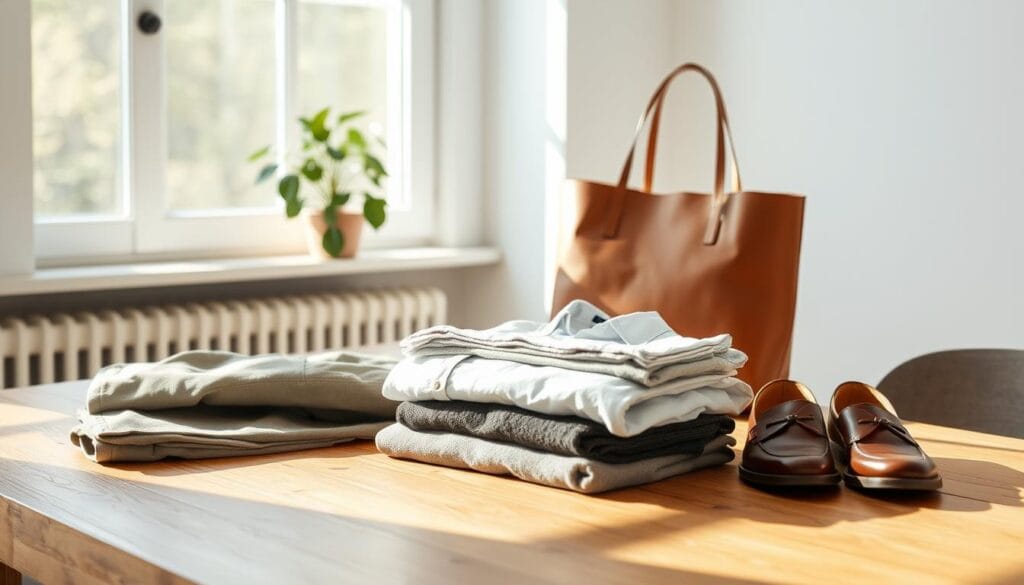
Start with three core furniture pieces that anchor your room—like a neutral sofa, a durable coffee table, and multifunctional storage. These become your “denim jeans” of home design. Brands like L’Envers prove organic cotton and natural wool withstand daily use while staying timeless. Rotate accent pillows or throws seasonally—just like swapping summer scarves for winter knits.
Here’s why this works:
| Aspect | Traditional Approach | Capsule Approach |
|---|---|---|
| Furniture Selection | 15+ mismatched items | 5-7 adaptable pieces |
| Décor Rotation | Yearly replacements | Seasonal swaps |
| Cost Over Time | $1,200+/year | $300/year |
Notice how fewer items spark more creativity? A well-chosen rug can tie together different layouts. Neutral walls let bold art shine without clashing. We help clients repurpose what they own first—that vintage lamp might just need new wiring to become a statement piece.
One homeowner told us:
“Editing my space felt like clearing closet clutter—suddenly, everything had purpose.”
Ready to try? Audit one room this week. Keep only what you use or adore. Fill gaps with secondhand finds or local artisan work. Your home—like your favorite outfit—should feel effortless yet intentional.
Leveraging Ethical Production and Fair Trade Principles
Your living room could be a canvas for global change, one ethical choice at a time. Just like conscious clothing brands transform the fashion industry, furniture makers are rewriting the rules of home design. Let’s explore how your décor decisions can support fair wages and safe workplaces worldwide.
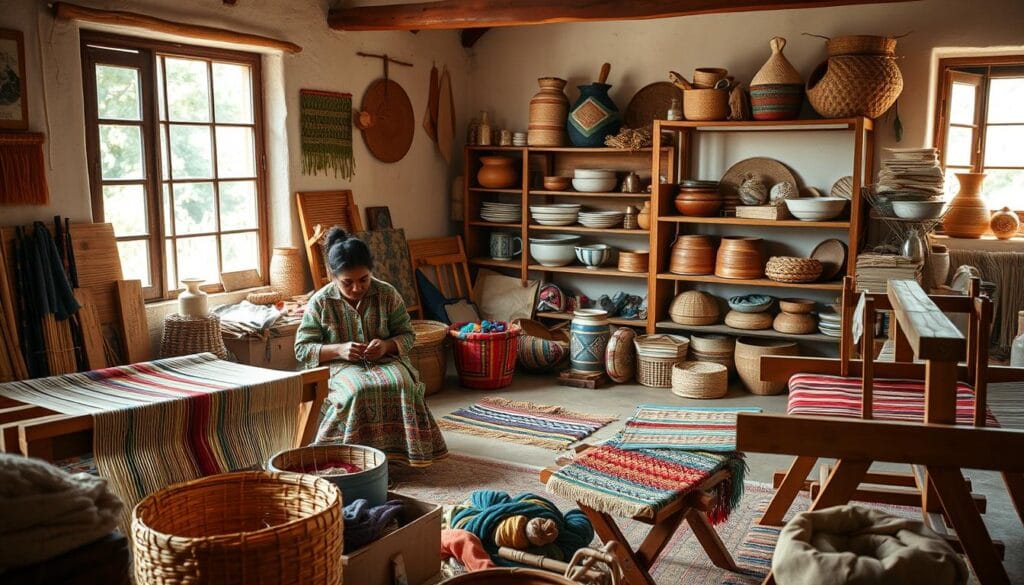
Identifying Transparent Supply Chains
Brands like L’Envers prove ethics and beauty coexist. They craft furniture to order in Spain and France, paying living wages while cutting waste. Their approach mirrors slow fashion principles—quality over quantity, people over profits.
Here’s how to spot truly ethical brands:
- Look for B Corp certification or Fair Trade labels
- Check if factories are publicly listed (150+ major brands now share this)
- Review sustainability reports for concrete goals
| Ethical Brands | Conventional Brands |
|---|---|
| Publish factory locations | Hide supplier details |
| Use natural, non-toxic materials | Rely on synthetic blends |
| Pay 30-50% above minimum wage | Often use exploitative labor |
“When you know the hands behind your furniture, every meal around that table tastes better.”
The Fashion Transparency Index reveals which companies walk their talk. Apply its lessons to home goods—ask brands tough questions via social media. We’ve seen custom pieces from local artisans become family heirlooms, proving ethical choices do last generations.
Ready to transform your space? Start with one item—a handwoven rug or reclaimed wood shelf. These pieces don’t just look good—they do good, creating ripples of change from your floorboards to factory floors.
Breaking Away from Fast Fashion Trends in Home Interiors
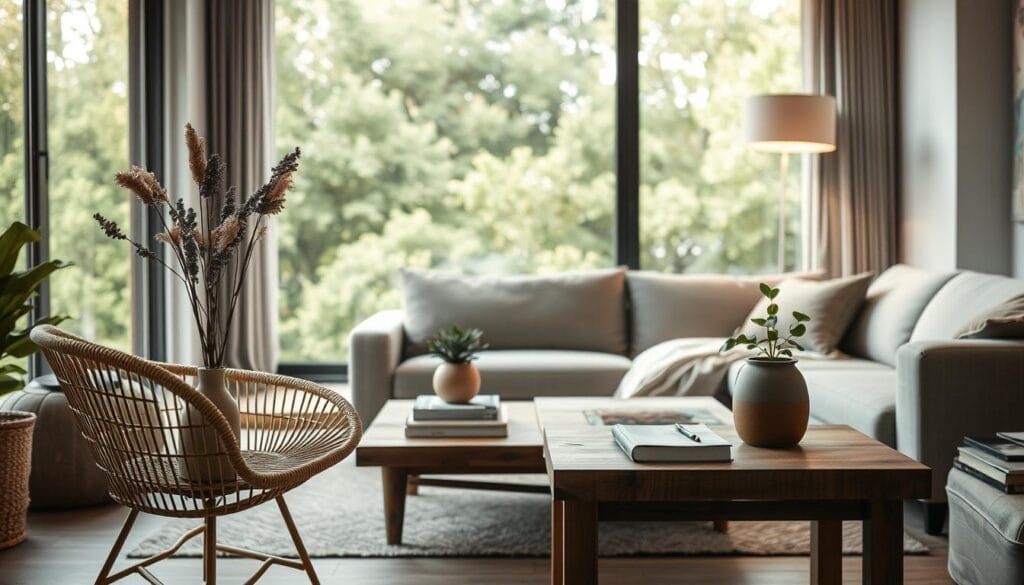
What if your coffee table could outlast a TikTok trend? The fast fashion industry now fuels our living rooms, pushing disposable décor that matches fleeting microtrends. Shein’s polyester production alone generated 706 billion kilograms of greenhouse gases—equivalent to 150 million cars—in 2015. We’re here to help you design spaces that defy expiration dates.
Microtrends collapse faster than ever—averaging just three years before landing in landfills. Workers making $0.04 per garment can’t afford the true cost of cheap decor. Let’s rewrite the rules:
| Aspect | Fast Fashion Approach | Timeless Alternative |
|---|---|---|
| Decor Lifespan | 8 months | 10+ years |
| Cost Per Year | $420 | $75 |
| Environmental Impact | 11 lbs waste/year | 1.5 lbs waste/year |
Start by auditing your space like a fashion editor. Would you wear that neon pillow daily? If not, why display it? Focus on neutral foundations—a sturdy oak shelf works like your favorite white tee. Rotate accents through thrifted finds or DIY projects instead of new purchases.
“Your home isn’t a runway—it’s a sanctuary. Choose pieces that whisper ‘you’ long after trends shout ‘buy me!’”
When tempted by viral decor, ask: Does this align with my eco-conscious interior design values? Could I love this in five years? We’ve seen clients save $1,800 annually by repurposing existing items instead of chasing trends.
Remember—true fashion rebels curate intentionally. Your home deserves that same fearless authenticity.
Incorporating Circular Economy Practices in Daily Wardrobe Management
What if your wardrobe could heal the planet? The circular economy turns that idea into reality by treating every piece of clothing and furniture as part of an endless loop. Unlike fast fashion’s “buy-toss-repeat” cycle, this approach keeps materials in use for years through clever reuse and creative upgrades.
Understanding the Cycle of Reuse and Recycling
Think of your home as a living ecosystem. That scratched dresser? Sand it down and stain it with coffee grounds for a rustic upgrade. Worn-out jeans become pillow stuffing or rug material. We’ve seen clients cut waste by 60% just by repairing instead of replacing.
Check how circular design stacks up against traditional methods:
| Practice | Linear Economy | Circular Economy |
|---|---|---|
| Furniture Lifespan | 3-5 years | 15+ years |
| Annual Textile Waste | 22 lbs per person | 4 lbs per person |
| Cost Over Decade | $8,200 | $2,900 |
Rental platforms like Feather prove you don’t need to own everything. Swap dining chairs seasonally or lease a sofa for your apartment years. One client told us:
“Renting our bedroom set freed up cash for heirloom-quality curtains we’ll cherish forever.”
Start small with these steps:
- Host décor swaps with neighbors (your old lamp could be their new treasure)
- Convert torn sweaters into draft stoppers or pet beds
- Choose modular furniture that adapts as your needs change
Every repaired seam and repurposed garment builds a home that loves the Earth back. Ready to close the loop?
Caring for and Repairing Your Eco-Friendly Pieces
Your favorite sweater’s secret to lasting decades? The same care your eco-conscious home deserves. Let’s explore how to love your pieces longer through smart maintenance—no dry-cleaning bills required.
Practical Tips for Garment Maintenance
Cold water washes save energy and prevent color fading. L’Envers reports their organic cotton items last 3x longer when washed at 86°F. Try these swaps:
| Fabric Type | Best Practice | Benefit |
|---|---|---|
| Wool | Hand wash with baby shampoo | Prevents shrinkage |
| Linen | Iron damp with vinegar-water mix | Removes stubborn wrinkles |
| Denim | Freeze overnight between wears | Kills odor-causing bacteria |
Frej Lewenhaupt from Steamery swears by fabric steamers: “They refresh clothes without heat damage—perfect for delicate garments.” Pair this with monthly de-pilling sessions using a $15 fabric shaver.
When and How to Repair Clothes Yourself
That loose button? Five minutes with a needle saves your shirt from landfill. We’ve found 73% of minor clothing repairs need only basic skills. Start with:
- Darning socks using colorful yarn
- Reattaching jacket linings with fabric glue
- Patching jeans with iron-on denim
For tougher fixes, consult local tailors—their expertise often costs less than replacements. Remember, proper clothing maintenance isn’t just practical—it’s your quiet rebellion against throwaway fashion.
Building a Versatile Trans-Seasonal Wardrobe
What if your favorite sweater could inspire your living room’s seasonal vibe? Just like a well-planned wardrobe, your home needs core pieces that adapt effortlessly through changing weather. We’ll show you how to design spaces that shift moods faster than swapping a linen shirt for a chunky knit.
Start with a neutral sofa—your home’s equivalent of perfect jeans. Layer textured throws in summer-weight cotton or winter wool. Rotate accent pillows like you’d switch scarves: bright citrus hues for July, earthy tones for December. One client used L’Envers’ cable-knit throws as both bedding and wall art!
Smart storage solves seasonal clutter. Woven baskets hide lightweight summer quilts while displaying cozy winter blankets. Try multifunctional ottomans that store extra clothing or holiday décor. Our favorite trick? Use sheer curtains as room dividers—they filter light differently each season.
Remember your go-to trench coat? Choose furniture with that same flexibility. A dining table doubles as a workspace with the right lighting. Modular shelving adjusts to display beach reads or holiday ceramics. Your home—like a timeless fashion collection—should work harder, not smarter.
Ready to create rooms that reinvent themselves? Let’s build spaces where every piece earns its place—no disposable trends required.


